#dji air unit
Text
#air drone#best dji drone#buy dji#buy dji drone#buy dji mavic 3#buy drone#buy mavic 3#dj1 store#dji 2#dji 2s#dji 3#dji 3 pro#dji accessories#dji agriculture#dji agriculture drone#dji air#dji air 3#dji air 3 release date#dji air unit#dji app#dji battery#dji battery charger#dji camera#dji canada store#dji charger#dji classic 3#dji contact#dji customer service#dji drone accessories#dji drone app
0 notes
Video
Amtrak 340 by Brian Hechel
Via Flickr:
Amtrak 340, one of the Hiawatha Service trains, moments earlier performed its station stop in Sturtevant, WI and in just over an hour will be arriving in Chicago where the crew will switch ends and run the same route back to Milwaukee.
#AMTK#AMTK 90221#Amtrak#DJI Air 3#Drone#Sturtevant#USA#United States#Wisconsin#cabbage car#geo:lat=42.68533617#geo:lon=-87.90618507#geotagged#veterans memorial#flickr
1 note
·
View note
Video
youtube
Matterhorn Drone Flight
Vuelo épico de drones cortesía del piloto Joshua Turner. Capturó las increíbles imágenes de la icónica cumbre de la montaña con un dron Iflight Chimera 7, una plataforma DJI Air Unit y una cámara GoPro Hero 10 Black.
2 notes
·
View notes
Text
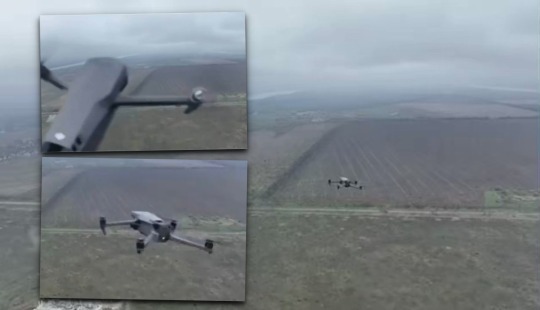
Video records drone 'dogfight' in Ukraine 🇺🇦
Fernando Valduga By Fernando Valduga 10/14/2022 - 06:00 in Military, War Zones
A video captured a Ukrainian drone apparently fighting in the sky against a Russian drone, showing what the future of war could be.
On Twitter, the footage, captured by a Ukrainian Mavic drone, shows the encounter with a DJI Mavic drone, allegedly used by the Russian military.
Both countries use drones to observe large areas.
When the Ukrainian Mavic approaches the supposed Russian drone DJI Mavic, the two face each other in a duel, breaking a piece of the Russian Mavic.
The plastic piece can be seen flying through the air, apparently hit by the propellers of the Ukrainian Mavic drone.
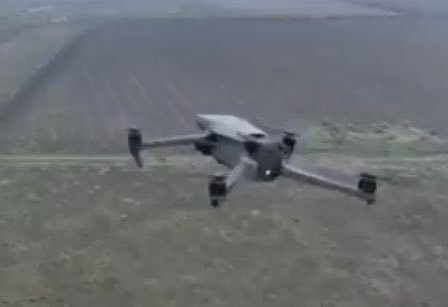
Serhiy Prytula, a Ukrainian public figure who helped raise funds for the Ukrainian army since the beginning of the war, posted the video on Twitter saying: "Duel in the style of World War I. The Ukrainian Mavic drone, which we delivered to one of the airborne units in the Donetsk region, destroys the Russian opponent."

Drones have been used in wars and conflicts since the early and mid-2000s, but they have begun to play major roles in recent years with advanced technology.
Images of Ukrainian and Russian drone combat can foreshadow what the future of drone combat will be like.
The war between Russia and Ukraine has been going on since February.
Although Ukraine has successfully continued the fight against Russian forces, President Vladimir Putin recently announced a mobilization of Russian reservists to increase forces.
Tags: Military AviationDronesWar Zones - Russia/Ukraine
Previous news
Russia deploys Mi-8 MTPR-1 electronic war helicopters to block Ukrainian air defense
Next news
Chinese J-20 PLA jets 'sweal' foreign war planes from the South China Sea
Fernando Valduga
Fernando Valduga
Aviation photographer and pilot since 1992, he has participated in several events and air operations, such as Cruzex, AirVenture, Dayton Airshow and FIDAE. It has works published in specialized aviation magazines in Brazil and abroad. Uses Canon equipment during his photographic work in the world of aviation.
Related news
MILITARY
Russian Aerospace Force receives updated Il-76MD-90A and Il-76MD-M aircraft
14/10/2022 - 16:00
MILITARY
Norway retires its Falcon 20ECM aircraft
14/10/2022 - 14:00
MILITARY
Russians are using R-37M air-to-air missiles as a decoy to attract Ukrainian air defenses
14/10/2022 - 12:00
MILITARY
Ukrainian MiG-29 jet suffers accident after allegedly having shot down five Russian drones
14/10/2022 - 09:30
MILITARY
Chinese J-20 PLA jets 'sweal' foreign war planes from the South China Sea
14/10/2022 - 08:00
A pair of Mi-8 MTPR-1 helicopters (Photo: Russian Ministry of Defense)
HELICOPTERS
Russia deploys Mi-8 MTPR-1 electronic war helicopters to block Ukrainian air defense
13/10/2022 - 21:09
homeMain PageEditorialsINFORMATIONeventsCooperateSpecialitiesadvertiseabout
Cavok Brazil - Digital Tchê Web Creation
Commercial
Executive
Helicopters
HISTORY
Military
Brazilian Air Force
Space
Specialities
Cavok Brazil - Digital Tchê Web Creation
2 notes
·
View notes
Text
"Autonomous Drones: Reshaping Logistics in the Digital Age"

Introduction to Autonomous Drone Market
The Autonomous Drone Market has experienced rapid growth across sectors like logistics, agriculture, and emergency response. Drones, equipped with AI and IoT capabilities, are reshaping traditional operations, particularly in the food industry, where they enable quicker, contactless deliveries. Factors such as reduced operational costs, improved efficiency, and increasing demand for autonomous solutions fuel this market. Key players are investing heavily in R&D for better navigation, payload capacity, and battery life. Regulatory challenges, air traffic management, and safety concerns continue to be barriers to further expansion.
The Autonomous Drone Market is Valued USD 15.9 billion in 2024 and projected to reach USD 53.4 billion by 2030, growing at a CAGR of CAGR of 18.9% During the Forecast period of 2024-2032.. They offer advantages in automation, precision, and efficiency, which has led to rapid adoption in sectors where human labor is traditionally required. Companies are innovating to improve drone range, battery life, and payload capacity to meet the growing demand for versatile, reliable solutions. Regulations, however, remain a limiting factor in many regions.
Access Full Report :https://www.marketdigits.com/checkout/3748?lic=s
Major Classifications are as follows:
By Range of Flight
Less Than 10 km
10 Km - 20 Km
20 Km - 30 Km
More Than 30 km
By Payload
Less Than 300 lbs
300-400 lbs
400-500 lbs
By Drone Type
Consumer / Civil
Commercial
Military
By End Use Industry
Agriculture & Forestry
Delivery & Logistics
Media & Entertainment
Construction & Mining
Oil & Gas
Security & Law Enforcement
Recreational Activity
Others
Key Region/Countries are Classified as Follows:
◘ North America (United States, Canada,)
◘ Latin America (Brazil, Mexico, Argentina,)
◘ Asia-Pacific (China, Japan, Korea, India, and Southeast Asia)
◘ Europe (UK,Germany,France,Italy,Spain,Russia,)
◘ The Middle East and Africa (Saudi Arabia, UAE, Egypt, Nigeria, and South
Key Players of Autonomous Drone Market
DJI, Parrot, Yuneec, 3D Robotics Inc., Go Pro, Holy Stone, Autel Robotics, Sense Fly, Kesper Drone, Hexagon, Delair, AeroVironment Inc., Lockheed Martin Cooperation, Israel Aerospace Industry Ltd., Microdrones GmbH and Others
Market Drivers in Autonomous Drone Market
Technological Advancements: Integration of AI, 5G, and IoT has enhanced drone autonomy, navigation, and communication.
Demand for Fast Delivery: Rising demand for quicker, more efficient delivery, particularly in urban areas and in sectors like food and e-commerce.
Cost Efficiency: Drones reduce human labor and logistical costs, especially in last-mile deliveries.
Market Challenges in Autonomous Drone Market
Regulatory Hurdles: Varying regulations across countries concerning drone usage, airspace control, and safety protocols.
Battery Life Limitations: Current drone battery technology restricts flight time and payload capacity, limiting operational efficiency.
Public Safety Concerns: The risk of collisions, technical failures, and air traffic management remains a significant challenge.
.
Market Opportunities in Autonomous Drone Market
Food and E-commerce Delivery: The rising demand for instant food and grocery deliveries is driving innovation in drone technology.
Agriculture: Autonomous drones can provide real-time data on crop health, irrigation, and yield forecasting, boosting agricultural productivity.
Logistics and Supply Chain: Autonomous drones can enhance inventory management, warehouse automation, and reduce last-mile delivery times.
Conclusion
The Autonomous Drone Market is on a trajectory of robust growth, driven by technological advancements and increasing demand for automated delivery solutions. The food delivery sector is emerging as a key player, showcasing the versatility and efficiency of autonomous drones. While regulatory challenges and technological constraints such as battery life remain barriers, ongoing innovations and investments are expected to address these issues. As industries such as agriculture, logistics, and healthcare embrace drone technology, the market is likely to see broader adoption across various sectors in the coming years.
0 notes
Text
Los pilotos de FPV ahora pueden utilizar las DJI Goggles 3 en conjunto con la O3 Air Unit.
La comunidad de drones FPV tiene motivos para estar contenta, ya que DJI ha integrado con éxito la Unidad de Aire O3 con las DJI Goggles 3. Este avance elimina la necesidad de múltiples visores para diferentes drones, permitiendo a los usuarios de las DJI Goggles 3 conectar fácilmente tanto con el Avata 2 como con drones FPV personalizados que cuenten con la Unidad de Aire O3.
Esta compatibilidad…
0 notes
Photo

DJI Goggles 3 Finally Supports O3 Air Unit: How to Bind Them and Other Considerations
0 notes
Text
A Comprehensive Analysis of the Global Unmanned Commercial Aerial Vehicle Market
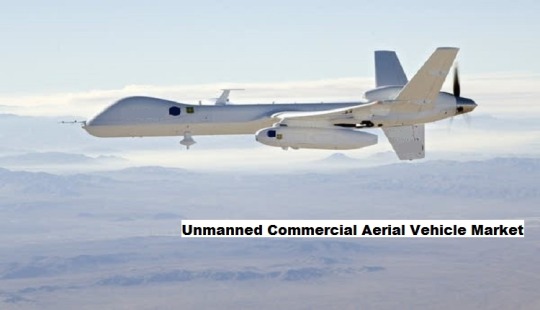
Increasing demand for efficient and cost-effective solutions in industries such as agriculture, infrastructure inspection, and logistics are the factors driving market in the forecast period 2025-2029.
According to TechSci Research report, “Unmanned Commercial Aerial Vehicle Market – Global Industry Size, Share, Trends, Competition Forecast & Opportunities, 2029”, The Global Unmanned Commercial Aerial Vehicle Market stood at USD 5.26 Billion in 2023 and is anticipated to grow with a CAGR of 6.84% in the forecast period, 2025-2029. the global unmanned commercial aerial vehicle (UCAV) market is experiencing a transformative phase, characterized by significant advancements in technology, expanding applications, and increased adoption across various industries. Drones, or unmanned aerial vehicles (UAVs), have evolved beyond military applications to become integral tools in commercial sectors, driven by their versatility, cost-effectiveness, and technological sophistication.
One of the primary drivers of the market is the diverse range of applications for UCAVs across industries. In agriculture, drones are utilized for precision farming, crop monitoring, and yield optimization. Infrastructure sectors benefit from UCAVs for surveying, mapping, and inspecting structures, while logistics companies explore drone delivery services for efficient last-mile transportation. The ability of UCAVs to access remote or hazardous locations, along with their capability for rapid deployment, positions them as valuable assets in various commercial endeavors.
Technological innovations play a pivotal role in shaping the UCAV market. Advancements in propulsion systems, battery life, artificial intelligence, and sensor technologies contribute to improved drone capabilities. This technological progress is reflected in the development of drones with enhanced endurance, autonomous navigation, and specialized features such as thermal imaging and LiDAR, expanding their range of applications and increasing their efficiency in various tasks.
Regulatory support is another key factor influencing the UCAV market. Governments around the world are recognizing the economic potential of commercial drone use and are actively working on regulations to ensure safe and responsible operations. Regulatory frameworks are evolving to accommodate the integration of UCAVs into commercial airspace, addressing safety concerns and providing guidelines for their operation in different industries.
The rise of urban air mobility (UAM) represents a notable trend, with the concept of using UCAVs for short-distance passenger and cargo transport gaining traction. Companies are investing in the development of air taxis and delivery drones, potentially revolutionizing transportation systems in densely populated urban areas.
Challenges persist, including regulatory complexities, privacy concerns, and the need for standardization in drone technologies. However, ongoing developments in regulations, advancements in technology, and collaborative efforts between industry stakeholders and regulatory bodies are expected to address these challenges.
Browse over market data Figures spread through XX Pages and an in-depth TOC on "Global Unmanned Commercial Aerial Vehicle Market.”
https://www.techsciresearch.com/report/unmanned-commercial-aerial-vehicle-market/22469.html
North America continues to be a powerhouse in the global unmanned commercial aerial vehicle (UCAV) market, with the United States at the forefront of innovation and market leadership. The region boasts a vibrant ecosystem of drone manufacturers, technology companies, and regulatory bodies that collectively drive advancements in UCAV applications. Companies like DJI, Amazon Prime Air, and Alphabet's Wing contribute to the diverse landscape, spanning applications from consumer drones to industrial solutions. The Federal Aviation Administration (FAA) plays a crucial role in shaping regulations that balance safety and innovation, making North America a dynamic and influential region in the UCAV market.
Europe is a key player in the global UCAV market, with a focus on diverse applications and regulatory harmonization. The European Union Aviation Safety Agency (EASA) leads efforts to establish standardized regulations for UCAVs across European countries, fostering a cohesive market. European companies such as Parrot, senseFly, and Airbus contribute to technological advancements, especially in applications like precision agriculture, environmental monitoring, and urban air mobility. The region's commitment to sustainability aligns with the development of electric and hybrid UCAVs, reflecting a holistic approach to shaping the UCAV market in Europe.
The Asia-Pacific region is a burgeoning market for UCAVs, fueled by rapid technological advancements and a growing demand for efficient solutions. Countries like China, Japan, and South Korea are pivotal players, with Chinese company DJI dominating the consumer drone market globally. The region's diverse landscape, coupled with the rise of industries like e-commerce and precision agriculture, contributes to the increased adoption of UCAVs. Governments are actively investing in research and development, and regulatory frameworks are evolving to support the burgeoning applications of UCAVs in fields such as logistics, agriculture, and surveillance.
The Middle East and Africa are increasingly recognizing the strategic importance of UCAVs for applications such as border security, surveillance, and infrastructure monitoring. Countries like the United Arab Emirates (UAE) are investing in UCAV technology, showcasing a growing interest in leveraging drones for both commercial and defense purposes. The region's vast and often challenging terrain creates opportunities for UCAVs to address unique needs, from wildlife monitoring to disaster response. As regulatory frameworks continue to develop, the Middle East and Africa are poised to play a significant role in the global UCAV market.
Major companies operating in Global Unmanned Commercial Aerial Vehicle Market are:
Parrot SA
SAIC
Israel Aerospace Industries
Elbit Systems Ltd
BAE Systems PLC
Precision Hawk Inc.
3D Robotics Inc.
Aurora Flight
Download Free Sample Report
https://www.techsciresearch.com/sample-report.aspx?cid=22469
Customers can also request 10% free customization in this report.
“The global unmanned commercial aerial vehicle (UCAV) market is undergoing a transformative shift, with technology advancements and diverse applications reshaping industries. As the industry matures, collaborative efforts between governments, industry stakeholders, and innovative companies are essential to navigate regulatory challenges and unlock the full potential of UCAVs. The market's trajectory is dynamic, driven by a balance between technological innovation, regulatory frameworks, and the evolving needs of various sectors,” said Mr. Karan Chechi, Research Director with TechSci Research, a research-based management consulting firm.
“Unmanned Commercial Aerial Vehicle Market – Global Industry Size, Share, Trends Opportunity, and Forecast, Segmented By Type (Fixed-Wing UAVs, Multi-Rotor Aerial Vehicles, Rotary Blade Type UAV), By Mode Of Operation (Remotely Piloted, Optionally Piloted, Fully Autonomous), By End-User (Agriculture, Energy, Public Utilities, Construction, Media And Entertainment, Government, Others), By Region, Competition, 2019-2029”, has evaluated the future growth potential of Global Unmanned Commercial Aerial Vehicle Market and provides statistics & information on market size, structure, and future market growth. The report intends to provide cutting-edge market intelligence and help decision makers take sound investment decisions. Besides, the report also identifies and analyzes the emerging trends along with essential drivers, challenges, and opportunities in Global Unmanned Commercial Aerial Vehicle Market.
Browse Related Reports
Commercial Drone Market
https://www.techsciresearch.com/report/commercial-drone-market/14966.html
Parachute Market
https://www.techsciresearch.com/report/parachute-market/7881.html
Commercial Aircraft Market
https://www.techsciresearch.com/report/commercial-aircraft-market/7462.html
Contact
Techsci Research LLC
420 Lexington Avenue, Suite 300,
New York, United States- 10170
M: +13322586602
Email: [email protected]
Website: www.techsciresearch.com
#Unmanned Commercial Aerial Vehicle Market#Unmanned Commercial Aerial Vehicle Market Size#Unmanned Commercial Aerial Vehicle Market Share#Unmanned Commercial Aerial Vehicle Market Trends#Unmanned Commercial Aerial Vehicle Market Growth
0 notes
Text

Global autonomous last mile delivery market was valued at US$ 20.80 billion in 2022 and is projected to attain a valuation of US $119.48 billion by 2031 at a CAGR of 22.4% during the forecast period 2023–2031.
Key Players in the Market Report
Airbus S.A.S.
Alibaba
Altitude Angel
Amazon.com, Inc. (Amazon Prime Air)
BIZZBY
Boeing
Cheetah Logistics Technology
DHL International GmbH
DoorDash Inc.
Kiwibot
DroneScan
Edronic
FedEx
Fli Drone
Flirtey delivery drone
Flytrex
JD.com, Inc.
Matternet Inc.
Meituan-Dianping
Parrot Drone SAS
Pudu Technology Inc
Rakuten Inc.
Skycart Inc.
SZ DJI Technology Co., Ltd
Terra Drone Corporation
United Parcel Service of America, Inc.
UVL Robotics
Wing Aviation LLC
Workhorse Group Inc.
Yuneec International
Zipline autonomous
Other Prominent Players
0 notes
Text
Afterburner 5 O3 6S HD | skyshop fpv
Afterburner - The Performance 5inch by 2RAW and iFlight
NOT A FREESTYLE DRONE - Afterburner is designed for professional pilots who use their FPV drones for cinematic work, this drone is not designed around being crashed into concrete and coming out fine. The drone is designed around aerodynamics and balance.
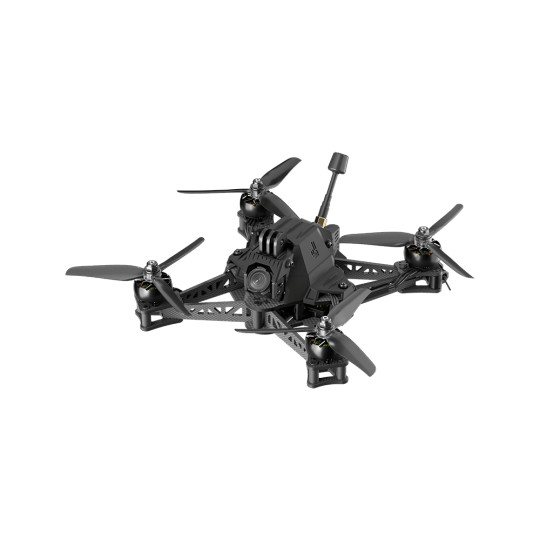
Highlight
Smallest Footprint
Afterburner has a 20% smaller footprint than traditional 5inch freestyle frames, this allows for easier transportation as well as increased agility and less drag - meaning better all round performance.
Aero Shell
The aeroshell controls the airflow around the body and within the drone. As the speed of the drone increases the aero shell acts as an air divider, preventing air from hitting the flat top plate. The shell also helps to shield the electronics from dirt and moisture so you can have more confidence in critical situations.
Advanced Truss Arms
The star design combined with the trusses ensures great stiffness while keeping the weight down, and perfect balance, delivering exceptional results when it comes to filming with buttery footage.
Bottom Mount Battery
Inspired from FPV racers, we took a bottom mount battery approach, this allows the battery to cause minimal drag possible and completely clears the top of the drone to allow for the Gopro mounting as well as clear line of sight for the GPS. Afterburner was built for the cinema pilot! The central battery also allows the CG to remain close to the middle of the body allowing for improved agility in the air.
No Prop in view with Gopro
In 16:9 the GoPro has no props in the view from 5 degrees all the way to 60 degrees.
DJI O3 HD Air Unit Low-Latency Digital Transmission
Up to 10 km video transmission range, enjoy a crisp and smooth real-time view in your goggles, even in environments with interference. (Source DJI)
4K Stabilized Video with 155° Ultra-Wide Angle
Together with high-grade imaging performance, it delivers exceptional visuals that will keep your audience on the edge of their seats. (Source DJI)
Specifications
Product Name: Afterburner 5 O3 6S HD
FC: BLITZ F7 Flight Controller
ESC: BLITZ E55 4-IN-1 2-6S 55A ESC
Video Transmission: DJI O3 Air Unit
Geometry: X-Frame
Frame: 210 mm wheelbase
Motor: XING2 2207 1750KV motors
Prop: GEMFAN 5.1X3.6X3 propellers
Weight: 472±7g (Without Battery)
Dimensions (L×W×H):148x148x64mm
Max Speed: 160km/h
Maximum Takeoff Altitude: 7000 m
Max Hover Time: Approx. 11mins with 6S Lipo 1400mAh battery W/O Load
Operating Temperature Range: -10° to 40° C
Antennas: Single Antennas
GNSS: GPS+SBAS+Galileo+QZSS+Glonass
Video Transmission
Product Name: DJI O3 Air Unit
Communication Bandwidth: Max 40 MHz
FOV (single screen): 155°
Communication Frequency:2.400-2.4835 GHz (RX only) / 5.725-5.850 GHz (RX and TX)
End-to-End Latency
With DJI FPV Goggles V2:
810p/120fps Video Transmission Quality: The latency is lower than 28 ms.
810p/60fps Video Transmission Quality: The latency is lower than 40 ms.
With DJI Goggles 2:
1080p/100fps Video Transmission Quality: The latency is as low as 30 ms.
1080p/60fps Video Transmission Quality: The latency is as low as 40 ms.
Max Video Transmission Bitrate: 50 Mbps
Max Video Transmission Range:10 km (FCC), 2 km (CE), 6 km (SRRC)
Operating Temperature Range: -10º to 40º C (14° to 104° F)
Power Input: 7.4-26.4 V
Audio Transmission: N/A
Packing List
1 x Afterburner 5 O3 6S HD BNF
1 x Screw Bag
2 x Battery Strap
2 x Battery pads
0 notes
Text
Drones of the Future: The Potential of Delivery Drones
Drones have grown in popularity for both recreational and business applications in recent years. However, today's unmanned aerial systems may eventually pale in comparison to the customised delivery drones designed to convey products right to our doorsteps. Major shops, logistics organisations, and digital startups are currently competing to construct drone delivery networks, which are expected to go into widespread operation this decade.
Delivery drone capabilities are likely to outperform existing UAS systems in terms of speed, range, autonomy, and sheer volume capacity over time. Drones have the potential to totally transform modern supply chains by combining intelligence and next-generation drone technology, from warehouse departures through last mile arrivals directly at homes or businesses.
Why Delivery Drones Now?
Several socioeconomic problematic conditions have come together, making it the ideal time for delivery drones to prepare for large-scale introductions across industries.
First of all, global business is more interconnected than ever before, thanks to mature ecommerce systems and rising customer expectations for speedy delivery. However, traditional transportation infrastructure is under strain as a result of continuous peak demand from online shopping and food delivery services. Road congestion grows as fuel and labour expenses continue to rise.
Simultaneously, drones benefit from developments in autonomous flight, battery density for longer flights, and computer vision systems that enable detailed collaboration. Soon, Cloud-connected drone operations might begin which could substantially decrease ground travel delays while completely bypassing roadway limits.
Shifting governmental policies can both speed and slow the upward trend. Governments are increasingly aiming to cultivate local technology innovators who can provide secure domestic jobs and technological advantages. However, governments thoroughly prioritise safety and privacy concerns about unmanned aircraft flying in public airspace, particularly at scale.
Major Players Targeting Delivery Drones
Originally recognized for bookselling, Amazon now concentrates R&D efforts on logistical difficulties inherent to all businesses. The company leads delivery drone research through its Prime Air subsidiary, which is already undertaking field experiments. Their drone prototypes use obstacle avoidance techniques and AI to transport tiny payloads autonomously.
United Parcel Service (UPS): the world's largest courier with over 65,000 global vehicles, sees drones as the next delivery platform. Aside from smaller experimental services in certain regions, they unveiled a fully automated mothership concept that releases and receives thousands of delivery drones throughout metropolitan areas.
JD.com, a Chinese powerhouse, just received approval to operate drone delivery routes that will stop at designated runway-equipped apartment blocks. While the initiative is currently in its early stages and limited in scope, it has the potential to support 80 million shipments handled across the country during peak annual shopping festivals.
Wing Aviation: a subsidiary of DJI's parent company, has formed partnerships with major merchants for unmanned aerial delivery in Australia and select US test locations. They present their custom multicopters as perfect "micro-delivery" vessels, with vertical takeoff and landing from surrounding launching sites.
Meanwhile, Zipline exclusively supports healthcare logistics, already aggregating over 200,000 commercial trips since it was founded. Their fixed-wing autonomous aircraft, which is currently primarily carrying medical supplies but can transport almost any modest payload, will soon expand beyond Africa and into Asia and America.
Ongoing Challenges Around Scaling Delivery Drones
While the future potential is remarkable, analysts predict more moderate adoption routes. Before unmanned delivery networks can become widely available, significant technical and regulatory barriers must be removed.
With greater cargo weight, most multicopters still have limited single-trip ranges of around 30 minutes. While sufficient for some short travels in jammed urban areas, upgraded batteries, motors, and even hydrogen cells aim to increase roundtrip ranges to achieve widespread viability across regions as well as farther.
Sensor Improvements AI-powered situational processing, and aviation computer engineering are all helping to improve the reliability of autonomous navigation in uncertain circumstances. Moving beyond line-of-sight transport is dependent on solution integrity, especially when valuable properties are at stake.
Regulatory uncertainty around larger-capacity drones flying larger routes across most nations complicates logistics planning at present. Aviation authorities rightly prioritize public safety and air traffic management through layers of flying standards, pilot qualifications, platform restrictions, operational area limits, and other measures. The policy generally lags years behind advances in technology.
Furthermore, delivery drone infrastructure demands at the national level remain almost hypothetical until large rollouts begin. Refinements in launch/retrieval ergonomics, charging protocols, weather resilience, theft/vandalism deterrents, and payload integrations will advance gradually from small trials to full-scale optimization.
Delivery Drones - 2030 and Beyond
Once the key building blocks above develop adequately over the coming several years, we may witness delivery drones unleashed across landscapes in unimagined ways by 2030. In the following section we explore various technological possibility and its alignment with practical business application:
Hyperlocal Distribution Hubs
Small delivery stations, whether owned by Zepto, Amazon, Uber, can be found in localities around towns and cities, allowing gig delivery drones to complete deliveries quickly. These tiny ports may be installed atop malls, Ring-secured homes, or even autonomous roving ground vehicles that circulate zones on demand.
After receiving orders, things are chosen and packed from dense shelving into standard container boxes that mount securely under drones with few size or weight restrictions. AI optimization bots enable efficient grouping of several cargoes per vehicle. Template containers make it simple to secure a wide range of items.
Dedicated Air Corridors & Traffic Systems
Rather than dangerous free-for-all skies, city traffic planners define designated aerial routes for unmanned logistics use. Drones are safely guided between distribution hubs and destination locations via streamlined corridors. Flight patterns are intelligently aligned based on building heights, population density contours, noise restrictions, existing airport approaches, and other geo-variables.
Dedicated city command centres monitor drone congestion and weather in the same manner as highways monitor currently, utilising sensors and visual surveillance. This allows for dynamic rerouting and drone coordination in real-time, ensuring reliable delivery even in unexpected situations. Links to homeland security and traffic administration systems help boost local supervision capabilities.
Recurring Revenue Unlocks Premium Services
With ultra-reliable logistical frameworks in place, premium commercial services emerge for those prepared to pay a higher price. Dedicated branded drones equipped with company colours and payloads deliver with higher priority. Local retailers now have guaranteed less-than-one-hour windows, introducing on-demand neighbourhood offerings. Gift-wrapped drone arrivals offer an extra special occasion charm!
Consumer packages also receive small RFID tags for low-energy passive tracking from facilities through handoff. Recipients track positions in real-time as they approach their doorstep. Transparency and predictability improve end-user experiences significantly.
As we stand on the brink of a transformative era in drone technology, the potential of delivery drones is poised to reshape industries and redefine convenience. With major players like Amazon, UPS, JD.com, Wing Aviation, and Zipline pushing the boundaries, the future promises swift and efficient aerial deliveries.
FAQs
1. Are delivery drones safe and reliable?
Yes, advancements in technology, including AI-powered navigation and obstacle avoidance systems, ensure the safety and reliability of delivery drones. Ongoing developments in the industry prioritise public safety and efficient air traffic management.
2. How far can delivery drones travel?
The current range of most multicopters is around 30 minutes for short trips in urban areas. However, ongoing improvements in battery technology aim to extend roundtrip ranges, making widespread drone deliveries feasible across regions and longer distances.
3. What challenges are hindering the widespread adoption of delivery drones?
Significant technical and regulatory barriers, such as cargo weight limitations, regulatory uncertainties, and infrastructure requirements, need to be addressed for widespread adoption. The industry is actively working to overcome these challenges to unlock the full potential of delivery drones.

0 notes
Text

Best Cinewhoop Drones and Parts in 2023
Understanding Cinewhoop Drones
Cinewhoops are a specialized category of mini FPV drones featuring ducts for propeller guards, designed to carry action cameras like GoPros for capturing smooth and cinematic aerial footage. Cinewhoops prioritize stability and safety over speed, allowing pilots to fly safely in close proximity to subjects, both indoors and outdoors. Their unique design makes them ideal for achieving cinematic-quality shots that are challenging to replicate with traditional 5" freestyle FPV drones.
Advantages of Cinewhoop Drones
Safe indoor flying with added protection from propeller guards
Capable of flying slowly and smoothly, perfect for capturing cinematic shots
Cost-effective due to their smaller size and components
Disadvantages of Cinewhoop Drones
Shorter flight times due to less efficient propeller, motors and added weight
Slower and less agile compared to standard freestyle drones
Not suitable for aggressive freestyle maneuvers
Factors to Consider When Choosing Cinewhoop Parts There are four sizes of cinewhoops available: 20, 25, 30, and 35, which correspond to propeller sizes (2", 2.5", 3", and 3.5"). Let's explore how to select the right cinewhoop parts based on these different sizes.
Propeller Size Selection When choosing the best propellers for your cinewhoop, consider the following factors:
Efficiency: How does propeller choice affect flight time?
Noise Level: Quieter propellers are less disruptive.
Power: Evaluate thrust and throttle requirements for hovering.
Smoothness: Check for vibrations introduced by the propellers.
Responsiveness: Assess how propellers impact flight performance.
Best 2-inch Props for Cinewhoops
The Emax Avan 3-blade propellers offer an excellent balance of performance and efficiency, with impressive flight times, especially at cruising speeds. The Gemfan 20354 and Gemfan 20364 also provide excellent power, although they may require larger motors.
Best 2.5-inch Props for Cinewhoops
The Azure 25403 stands out as one of the most efficient 2.5" propellers, offering long flight times while still delivering adequate thrust. The Emax Avan 2.5 inch propellers are also powerful.
Best 3-inch Props for Cinewhoops
After testing various options, the GEMFAN D76 DUCTED 76MM 5 BLADE props provide a great balance of thrust, noise level, efficiency, and mounting options for 3-inch cinewhoops.
Motor Selection
Choosing the right motor is crucial for cinewhoops.
For 2.5-inch cinewhoops,motors in the 1106 to 1408 range have been tested.
The MEPS 1404 Brushless Motor is recommended for 2.5-inch cinewhoops.
For 3-inch cinewhoops, the MEPS 2004 3000KV motors are ideal for supporting an action camera while ensuring clear and jitter-free video.
Battery Selection
Selecting the right battery depends on motor KV, propeller size, weight, and desired flight time.
TATTU R-LINE 1050MAH 95C 4S XT60 is an excellent choice for a balance of flight time and weight, offering up to 6 minutes of flight while keeping your setup agile.
Frame Selection
Consider frames like the Beta95X V3 2.5-inch Frame for indoor flying, the iFlight BumbleBee V3 3-inch Frame for outdoor use, and the DJI Cinewhoop 3-inch DJI Avata for versatility and long flight times.
ESC and FC Selection
Using a Flight Controller with a 20x20 stack is a popular choice for cinewhoops to keep the setup lightweight. The Mamba F722 Mini Betaflight Flight Controller & Mamba F40 MINI ESC is a compact option that works well with micro quad FPV racing.
Camera Selection for Different Cinewhoop Sizes
2-inch cinewhoop: Ideal for staying under the 250g weight limit with a bare GoPro or other action cameras. Some models offer compatibility with DJI O3 Air Units for a compact setup.
2.5-inch or 3-inch cinewhoop: Suitable for carrying a Naked GoPro or GoPro Bones, providing better outdoor performance.
3.5-inch cinewhoop: Best for flying outdoors with a full-sized GoPro like the GoPro Hero 11 Black.
Top RTF Cinewhoop Recommendations in 2023
GEPRC 2-inch Cinewhoop (CineLog20)
SpeedyBee 2.5-inch Cinewhoop (Flex25)
DJI Avata 3-inch Cinewhoop
In 2023, cinewhoop drones offer various options for capturing cinematic footage, making it essential to choose the right combination of parts to meet your specific needs.
0 notes
Text
No, any drone battery cannot be used in any drone. Different forms, dimensions, voltages, and capacities are available for drone batteries. Using the incorrect battery can harm your drone or even cause it to crash because each drone is made to work with a specific kind of battery.
When selecting a drone battery, keep the following things in mind:
Voltage: Volts (V) are used to rate drone batteries. The battery's voltage must satisfy the voltage specifications of the drone. The drone's electronics could be harmed by using a battery with a greater voltage.
Capacity: Milliampere-hours (mAh) are the unit of measurement for drone battery capacity. The drone's flight time will increase with the mAh rating. You must select a battery that is the proper size and weight for your drone because bigger mAh batteries are also heavier.
Connector type: You must select a battery with the same type of connector as your drone because different drone batteries have different sorts of connectors.
You should also take the battery's brand into account in addition to these variables. Some drone manufacturers employ exclusive batteries that cannot be used with drones from other brands.
It is advised to refer to your drone's documentation or get in touch with the manufacturer if you are unclear about the battery to use for your drone.
Examples of drone batteries that are incompatible with one another include the following:
DJI Mavic Air 2 battery: Only DJI Mavic Air 2 drones are compatible with his batteries.
Parrot Anafi USA battery: Only drones made by Parrot Anafi USA are compatible with this battery.
Skydio 2+ battery: Only drones with Skydio 2+ are compatible with this battery.
Any of these drones could sustain damage or perhaps crash if the incorrect battery is used.
If you are new to drones, it is important to do your research and learn about the different types of drone batteries before you purchase one.
0 notes
Text
Hummingbird
RedWasp Drone Aerophotography Professional Equipment
We proud to show our customers our Drone Fleet
Hummingbird
Rip through the sky with speed, power, and complete control. Go into the beyond and redefine flying.
The DJI Digital FPV System was designed for the drone racing industry. It consists of the DJI FPV Air Unit Module, DJI FPV Camera, DJI FPV Goggles, and DJI FPV Remote Controller, all of…
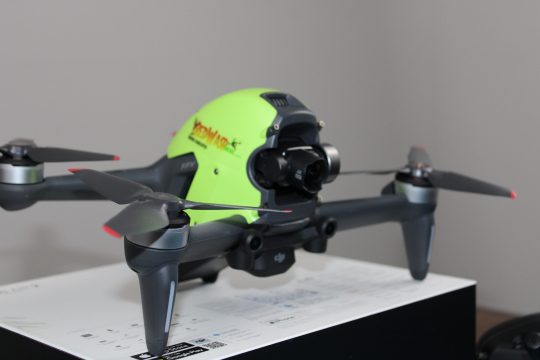
View On WordPress
#Drone 4k Video Services#Drone Mapping#Drone Photography#Drone Service#Drone Service in Milton#Drone Service in Pace#Drone Service in Pensacola#Drone Video#RedWasp Drone
0 notes